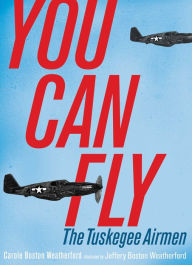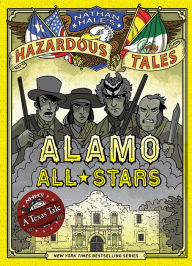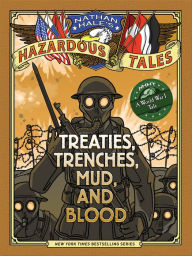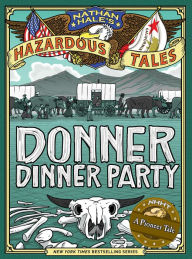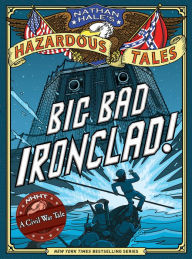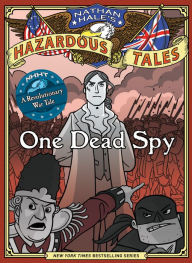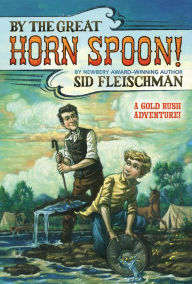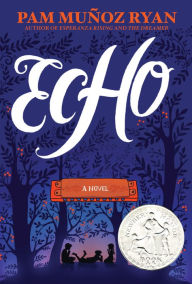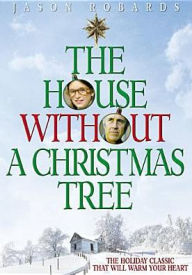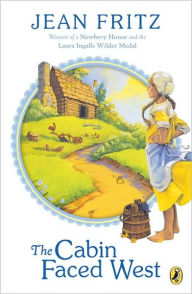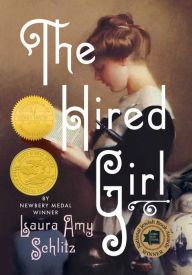new posts in all blogs
Viewing: Blog Posts Tagged with: mg historical, Most Recent at Top [Help]
Results 1 - 25 of 71
How to use this Page
You are viewing the most recent posts tagged with the words: mg historical in the JacketFlap blog reader. What is a tag? Think of a tag as a keyword or category label. Tags can both help you find posts on JacketFlap.com as well as provide an easy way for you to "remember" and classify posts for later recall. Try adding a tag yourself by clicking "Add a tag" below a post's header. Scroll down through the list of Recent Posts in the left column and click on a post title that sounds interesting. You can view all posts from a specific blog by clicking the Blog name in the right column, or you can click a 'More Posts from this Blog' link in any individual post.
Raymie Nightingale. Kate DiCamillo. 2016. Candlewick. 272 pages. [Source: Review copy]
First sentence: There were three of them, three girls. They were standing side by side. They were standing at attention.
Premise/plot: Set in 1975, in Florida, Raymie Nightingale is middle grade novel about everything and nothing all at the same time.
Three girls--Raymie Clarke, Beverly Tapinski, Louisiana Elefante--become the Three Rancheros one summer. Technically, these three are brought together by a couple of 'obvious' things: they are all in a baton-twirling class, they all will be competing in a Little Miss Central Florida Tire competition. One of the questions on the application asks each girl to LIST their good deeds on a separate piece of paper. But the obvious reasons these three belong together aren't the 'real' reasons. Each girl knows something of loss, of longing, of regret, of 'the real world.'
Raymie's quest to do a good deed so she can write it down leads to the start of a not-so-wonderful, wonderful summer. Her good deed--to read to the elderly about FLORENCE NIGHTINGALE--goes horribly wrong. One patient REFUSES to listen, and her spur-of-the-moment good deed to answer the lonely cries of another patient causes her to DROP HER BOOK--HER LIBRARY BOOK--IN A PANICKED DASH.
Raymie seeks help from Louisiana and Beverly....and in return, she pledges to help them.
My thoughts: LOVED THIS ONE. I'm not sure it's BECAUSE OF WINN DIXIE all kinds of magical. But that is because I loved, loved, loved, LOVED that one so very much. It's a GREAT book though. And I really enjoyed all three girls. I really found myself loving Louisiana and her grandmother most of all. I'm not sure why. I just do. Maybe it was Louisiana's duck barrettes? Maybe it was her hope? I don't know. But I love her fiercely. I think I love all three girls actually.
I was confused for the first few chapters, but, eventually everything clicked into place and it was LOVE.
I wouldn't mind a movie adaptation.
© 2016 Becky Laney of
Becky's Book Reviews

By:
Becky Laney,
on 10/29/2016
Blog:
Becky's Book Reviews
(
Login to Add to MyJacketFlap)
JacketFlap tags:
war,
J Fiction,
World War II,
verse novel,
MG Fiction,
library book,
mg historical,
j historical,
2016,
books reviewed in 2016,
Add a tag
You Can Fly. Carole Boston Weatherford. 2016. 96 pages. [Source: Library]
First sentence: No matter that there are only 130/ licensed black pilots in the whole nation. Your goal of being a pilot cannot be grounded/ by top brass claiming blacks are not fit to fly./ Your vision of planes cannot be/ blocked by clouds of doubt./ The engine of your ambition will not brake/ for walls of injustice--no matter how high.
Premise/plot: You Can Fly is a collection of poems--all written in second person, to you--about the Tuskegee Airmen. Readers can potentially learn a lot about flying and airplanes, the second world war, and race relations in the 1940s.
The perspective is unusual. But it oddly works for me.
You are in Class 42-C under all white command./ Your first lesson: to "Yes, sir!"/ and "Sir, no sir!" your officers.
The poems are still able to communicate a lot of details: names, places, dates, statistics, etc. Yet the poems are not dry and boring.
You love Hershey's bars,/ but letters from home are sweeter./ Hearing your name during mail call/ is like being lifted by a prayer.
My thoughts: I really enjoyed this one. I spent several years editing interviews for the Women Airforce Service Pilots. So while there are definite differences--big differences--between the two groups, it did give me an understanding or appreciation for training and flying at that time. My love of World War II is what led me to this one, not specifically the poetry. But the poetry is lovely I have to say!
It is a short, compelling read. It made me wish that MORE history subjects were covered through poetry. (Though not just any poetry would do, I suppose!)
I love the fact that it is just eighty pages. I do. In school, when I was on the younger side, when assigned to read a "nonfiction" book to give a report, I always looked for the SHORTEST book no matter the subject.
© 2016 Becky Laney of
Becky's Book Reviews
Full of Beans. Jennifer L. Holm. 2016. Random House. 208 pages. [Source: Review copy]
First sentence: Look here, Mac. I'm gonna give it to you straight: grown-ups lie. Sure, they like to say that kids make things up and that we don't tell the truth. But they're the lying liars.
Premise/plot: Full of Beans is the prequel to Jennifer L. Holm's Turtle in Paradise. Both books are set in Key West, Florida. Full of Beans is set in 1934, and Turtle in Paradise is set in 1935. Bean, a character first introduced in Turtle in Paradise, narrates the book. And WHAT A CHARACTER Holm has given us!!! I wish Bean starred in a dozen books! That is how much I love and adore him.
So what is it about? It's the Great Depression and Bean and his family--the whole community, the whole nation--is in need. Bean does what he can to help his family out while his Dad is off crossing the country looking for any job he can get. But it isn't until the end of the book that Bean's inspiration pays off. Until then, he too is prone to trying anything and everything to bring home what nickels and dimes he can.
Bean has two brothers: Kermit and Buddy. He has a very hard-working mother and a MEANIE of a grandmother.
The book opens with Bean trying to determine if the government's visitor to Key West is good news or bad news....
My thoughts: I really enjoyed this one. I'm not sure the plot is wow-worthy on its own. But. Because it's BEAN I was engaged start to finish. The characters make this novel well worth reading. Even if you don't love, love, love historical fiction.
© 2016 Becky Laney of
Becky's Book Reviews
Turtle in Paradise. Jennifer L. Holm. 2010. Random House. 177 pages. [Source: Library]
First sentence: Everyone thinks children are sweet as Necco Wafers, but I've lived long enough to know the truth: kids are rotten.
Premise/plot: Turtle, our heroine, is sent to live with her aunt and her cousins in Key West, Florida. The novel is set during 1935. And the Great Depression is one of the reasons why she's sent. Her mother is a housekeeper, and her new employer does not like children...at all. She needs the job so she sends her daughter away to live with her sister. Turtle's arrival is a surprise! She arrives before the letter does. Turtle brings with her one cat, Smokey. Her cousins are Bean, Kermit, and Buddy. The friends she hangs around with? The Diaper Gang.
My thoughts: What did I love most about this one? Practically everything. I loved Turtle's voice. I loved getting to know her. I loved getting inside her head. I also loved the setting and atmosphere of this one. One definitely gets a sense of time and place and culture. I also loved the characterization and the relationships. Seeing Turtle get to know her grandmother was priceless. Not because the grandma was sweet and lovely. But because she was just as fierce as Turtle herself.
I reread this one because I was excited about Full of Beans. I thought that Full of Beans was a sequel. It isn't. It's a prequel. It's set in 1934. It stars Bean and his family and friends. It's a great book. But I still wish I knew what happened next to Turtle. I don't doubt that Turtle will survive and find a way to thrive--that's who she is--but I do wish to spend more time with all of them.
© 2016 Becky Laney of
Becky's Book Reviews

By:
Becky Laney,
on 9/2/2016
Blog:
Becky's Book Reviews
(
Login to Add to MyJacketFlap)
JacketFlap tags:
bullying,
J Fiction,
World War II,
MG Fiction,
library book,
mg historical,
j historical,
2016,
books reviewed in 2016,
Add a tag
Wolf Hollow. Lauren Wolk. 2016. 304 pages. [Source: Library]
First sentence: The year I turned twelve, I learned how to lie.
Premise/plot: Annabelle, the heroine, faces her hardest struggle yet in the year 1943 when a new girl at school, Betty, begins to bully her. Annabelle is reluctant to tell her parents--or her teacher--what is going on. Afraid that Betty won't stop bullying her and will start to bully her brothers as well. But one adult, a near-homeless war veteran named Toby, witnesses Betty in action. When one of Betty's pranks goes too far, Annabelle's world is turned upside down. Life will never be the same, could never be the same.
My thoughts: Wolf Hollow might suit other readers better than it suits me. The depiction of Annabelle's aunt, Lily, bothered me. "A tall, thin, ugly woman who might have been handsome as a man, Aunt Lily spent her days working as a postmistress and her nights praying and reading from her Bible...her big, square teeth and her feverish devotion to God frightened me." In every single scene with Lily, she's presented as a villain. And at least in Annabelle's eyes, part of the villainy, part of the "getting it wrong, being in the wrong" is connected with her aunt's Christian faith. If Lily was more than a one-dimensional character, if she was perhaps a complex creature with strengths and weaknesses, then perhaps I could forgive much. I don't mind characters with weaknesses. I really don't. In fact, give me a HUMAN character each and every time. But don't give me someone who is 100% wrong because she's 100% devoted to Christ and call it characterization.
That being said, Annabelle is a solid narrator. I really enjoyed getting to know her. She is a young girl in a difficult position forced to remain in a difficult position. There is plenty of drama and action and conflict in this one. I would say the drama almost overpowers the characterization, however. In particular, Betty and Andy were lacking in character development which is a pity. What motivates a person to act a certain way? What is going on in his or her life behind the scenes? I could think of half a dozen more WHY questions. And perhaps it's asking too much for an author to get inside the head of a bully or two. But I've read other novels--even for this audience--that go there better. I didn't "need" a redemption story where Annabelle and Betty become best friends over the course of a school year, and, all this misunderstanding is swept aside as both girls experience forgiveness and new beginnings. So I wasn't disappointed exactly with the turn of this story.
There are definitely things I like about Wolf Hollow--just not everything.
© 2016 Becky Laney of
Becky's Book Reviews

By:
Becky Laney,
on 8/24/2016
Blog:
Becky's Book Reviews
(
Login to Add to MyJacketFlap)
JacketFlap tags:
library book,
Harry N. Abrams,
mg historical,
j historical,
2016,
graphic novels,
Texas,
J Fiction,
MG Fiction,
Add a tag
Alamo All-Stars (Nathan Hale's Hazardous Tales #6) 2016. Abrams. 128 pages. [Source: Library]
First sentence: Three hundred families...land grand....Texas...almost home.
Premise/plot: Nathan Hale and his two pals (the hangman and the British Officer) are joined by Juan Seguin and his three executioners (firing squad, I believe?) to tell the story of the Alamo. It doesn't rush into the story of the Alamo though. Readers learn about Mexico declaring its independence from Spain, the setting up and deposing of several Mexican governments, the arrival, with permission, of American settlers (families) into Texas, the clashes and near-clashes of those settlers with the native tribes in Texas (all given names, I won't mention them all here) and with the Mexican government. Not all Mexican leaders welcomed the idea of settlers, some feared that the more settlers there were, the more likely they would rebel and claim Texas for their very own. Readers learn about Stephen F. Austin, Jim Bowie, Sam Houston, Davy Crockett, William Travis, etc. Some of the people we learn about center around the Alamo--lived, fought, and died at the Alamo--some not. The book explores why they were fighting, what they thought they were fighting for, and their strong personalities that certainly didn't always help in their decision making.
My thoughts: Though a Texan, Texas history has not been my strongest subject especially when I was in school! I found this book a lot more interesting than a textbook. It also helps knowing that I'll never be quizzed on the subject again. Quite the difference between reading for the story and reading to remember names, dates, and places.
There were a LOT of characters in this one. It was fun that our familiar gang was joined by four more. Juan Seguin and his executioners added something to the story. I liked how the hangman came to get along with them and wanted to have a sleepover.
© 2016 Becky Laney of
Becky's Book Reviews

By:
Becky Laney,
on 8/23/2016
Blog:
Becky's Book Reviews
(
Login to Add to MyJacketFlap)
JacketFlap tags:
graphic novels,
slavery,
J Fiction,
MG Fiction,
library book,
Harry N. Abrams,
mg historical,
j historical,
2015,
books reviewed in 2016,
Add a tag
The Underground Abductor. (Nathan Hale's Hazardous Tales #5) Nathan Hale. 2015. Abrams. 128 pages. [Source: Library]
First sentence: It is time to hang this spy! Are you sure? Can't we get one more story out of him first?
Premise/plot: Nathan Hale sets out to prove that America isn't perfectly perfect, and, that America has in fact "taken part in some truly horrible, despicable, abominable, atrocious, downright evil acts." He speaks, of course, of slavery. And in this graphic novel, he tells the story of Harriet Tubman (aka Araminta Ross). It's an intense story without a doubt. He speaks of her growing up in slavery, the abuses she faced, the challenges she overcame, her marrying a free man, her decision to run away, her decision to run back into slavery. For it became her mission to travel back and forth between North and South saving slaves--escorting slaves to safety, to Canada, in fact. All via the "underground railroad" of abolitionists. Some of this information I was familiar with, but, some was new to me. For example, I was not aware of her head injury perhaps leading to her narcolepsy. I had no idea of her visions either!
My thoughts: I am so glad I discovered this series. I really have enjoyed reading these books practically back to back. I would definitely recommend all of the books in the series. I hope it is a very LONG series.
© 2016 Becky Laney of
Becky's Book Reviews

By:
Becky Laney,
on 8/22/2016
Blog:
Becky's Book Reviews
(
Login to Add to MyJacketFlap)
JacketFlap tags:
books reviewed in 2016,
graphic novels,
J Fiction,
World War I,
2014,
MG Fiction,
library book,
Harry N. Abrams,
mg historical,
j historical,
Add a tag
Treaties, Trenches, Mud, and Blood. (Nathan Hale's Hazardous Tales #4) Nathan Hale. 2014. Abrams. 128 pages. [Source: Library]
First sentence: This prologue is brought to you by E Pluribus Hangman.
Premise/plot: Nathan Hale shares with the British soldier (Provost) and hangman a story of when England and America will no longer be fighting each other but best friends and allies. This graphic novel is about World War I. It selectively, yet descriptively, tells of the war, year by year. It is action-packed, and yet one knows it's not exhaustive in its coverage.
Each country mentioned (both those fighting and those holding onto their neutral status) gets an animal assigned to it. So most of the illustrations are of animals at war with one another. Serbia is a Wolf. The Austro-Hungarian Empire is a Griffin. Russia is a Bear. Germany is an Eagle. France is a Gallic Rooster. Belgium is a Lion. England is a Bulldog (since Lion was already taken). America is a Bunny (since Eagle is already taken). Australia is a Kangaroo. Canada is a Beaver. New Zealand is a Kiwi. India is a Tiger. Ottoman Empire is an Otter. Japan is a Raccoon Dog. Those are the countries I can remember.
World War I is a complex subject, there is a lot to digest. There are hundreds--if not thousands--of books written by adults for adults seeking to explain the war and exhaustively cover every battle, every victory, every loss. So it is an ambitious project to condense the war into a middle grade graphic novel.
Nathan Hale: War is built and controlled by human hands--humans start it, humans stop it.
Hangman: Then WHY DIDN'T THEY STOP IT EARLIER--BEFORE IT KILLED EVERYBODY?! WHY DID THEY LET IT OUT IN THE FIRST PLACE!? THEY SHOULD LOCK IT UP AND NEVER EVER LET IT OUT!!!
Provost: Calm down, Hangman! There are times when war is a necessity. Tell him it is so, Captain Hale.
Nathan Hale: I'm not here to judge which wars were necessary and which wars weren't. I just tell the story. World War I is best summed up by those who experienced it.
All war is a symptom of man's failure as a thinking animal. ~ John Steinbeck
My thoughts: I really thought this book was well done. Yes, it's a bit text heavy. Yes, there is a LOT of information packed into it, perhaps too much information to actually absorb and digest. But it's well-crafted and well-organized. I'm impressed by how Nathan Hale (the author) was able to break down all the information and present it in such a concise way. War is never glorified, yes, the Provost and Hangman sometimes get carried away with BATTLES, but, by the end, Nathan Hale (the spy) has moved them both with his story.
© 2016 Becky Laney of
Becky's Book Reviews

By:
Becky Laney,
on 8/17/2016
Blog:
Becky's Book Reviews
(
Login to Add to MyJacketFlap)
JacketFlap tags:
family,
J Fiction,
World War II,
MG Fiction,
library book,
mg historical,
j historical,
2016,
books reviewed in 2016,
Add a tag
Paper Wishes. Lois Sepahban. 2016. FSG. 192 pages. [Source: Library]
First sentence: Grandfather says that a man should walk barefoot on the bare earth every day.
Premise/plot: Paper Wishes is a middle grade historical novel set during World War II. Manami, our heroine, soon finds herself ripped away from the life she knows and loves--along with her family, her friends, her neighbors--because she's Japanese-American. Manami's family includes her grandfather, her father, her mother, an older brother (Ron) and an older sister (Keiko). Manami and her grandfather are especially, especially close to their dog Yujiin. So close that Manami tries to sneak the dog onto the bus or train that is taking them away. It does not work. And the dog is taken from her. This traumatic event leaves her without a voice. She does not speak for months--almost the entire book. But just because she isn't speaking doesn't mean she doesn't have a way of expressing herself and finding a voice. She DRAWS. She paints. And she gives some of her drawings to the wind as PAPER WISHES. What does she wish for most of all? HER dog, of course. So she sends along dozens of drawings of Yujiin hoping that somehow these wishes will come true...
My thoughts: I really found this to be an emotionally compelling read. I loved Manami and her family. In particular, I love her, Ron, and the grandfather. (I don't honestly feel I got to know-know her parents. Though I liked them well enough). I really liked getting to know her teacher as well.
Anyone who enjoys character-driven historical novels with a lot of heart will enjoy this one.
© 2016 Becky Laney of
Becky's Book Reviews

By:
Becky Laney,
on 7/30/2016
Blog:
Becky's Book Reviews
(
Login to Add to MyJacketFlap)
JacketFlap tags:
graphic novels,
series books,
J Fiction,
MG Fiction,
library book,
Harry N. Abrams,
2013,
mg historical,
j historical,
books reviewed in 2016,
Add a tag
Donner Dinner Party. (Nathan Hale's Hazardous Tales #3). Nathan Hale. 2013. Harry N. Abrams. 128 pages. [Source: Library]
First sentence: Hear ye! Hear ye! Hear ye!
Premise/plot: Nathan Hale returns for this third hazardous tale in this graphic novel. The story that will prolong his life and delay his hanging is the story of the DONNER PARTY. His immediate audience, of course, is the hangman and a British officer. It's very convenient that since being eaten by the large American History book he can see the future and use the future to tell super-entertaining stories. Readers first meet the Reed family led by James Reed. Other families will be introduced as they journey west and join (and quit) wagon trains. The dangers are MANY. Some dangers are unpredictable and almost unavoidable. Other dangers they walk straight into confidently, sweeping away warnings. Usually if not always, always, it's the MEN making the decisions and the women and children who can do nothing but except the judgement of husbands and fathers. The story is FASCINATING AND HORRIBLE at the same time.
My thoughts: I really enjoyed this one. It is quite a compelling, absorbing read. You wouldn't think there would be a lot of characterization in a graphic novel, but, surprisingly there is. I had read very little if anything about the Donner Party, and, so I found it really interesting. I knew it was a grim story, but, I had not realized there were survivors too. So it wasn't quite as depressing as I first imagined it to be.
I definitely recommend this series of graphic novels. Even if you don't necessarily love reading graphic novels. The focus on history has me hooked. And I've become quite fond of Nathan Hale and his two would-be executioners.
© 2016 Becky Laney of
Becky's Book Reviews
Big Bad Ironclad (Nathan Hale's Hazardous Tales #2) Nathan Hale. 2012. Harry N. Abrams. 128 pages. [Source: Library]
First sentence: If you've got a story, you'd better tell it, Nathan Hale. This is a hanging, not a children's story hour.
Premise/plot: Nathan Hale, the spy, continues to outwit the British in this second graphic novel. (The first book in the series is ONE DEAD SPY.) Though he's due to be hanged any minute, his tales from the future (all taken from American History) are so entertaining that the British officer and hangman are delaying a bit. In his conversational style, the focus shifts from the current war (Revolutionary) to the Civil War. These stories concern the NAVY and the Civil War sea battles. Specifically, the race to build the best ironclad ships and create an indestructible navy. The South had the U.S.S. Merrimack. The North had The MONITOR. Of course, it isn't just the two ships that are the subject of this one. So many people are introduced, some of them quite fascinating and 'new to me' at that.
My thoughts: I enjoyed this one even more than the first book in the series. I really found this to be a quick, absorbing read. I may have thought it pushed a little too far to the absurd side when Gustavus Fox was illustrated as a fox to satisfy the whim of the hangman, but, I overlooked that in the end!
Even if you don't "love" graphic novels, if you love history you should give one of the books in the series a try.
© 2016 Becky Laney of
Becky's Book Reviews

By:
Becky Laney,
on 7/17/2016
Blog:
Becky's Book Reviews
(
Login to Add to MyJacketFlap)
JacketFlap tags:
2006,
YA Fiction,
YA Romance,
Houghton Mifflin Harcourt,
MG Fiction,
review copy,
YA Historical,
mg historical,
books reviewed in 2016,
mg romance,
Add a tag
Cyrano. Geraldine McCaughrean. 2006. HMH. 128 pages. [Source: Review copy]
First sentence: The curtain goes up. Silence falls. A painted moon wavers on a painted backdrop. The audience shivers with delight. For what could be better than an evening at a Paris theatre? Who more famous than the evening's glittering star? Enter the magnificent Montfleury, stage right!
Premise/plot: A prose adaptation--for teens--of the French play Cyrano de Bergerac written by British author Geraldine McCaughrean. Now, I do love the play. And I'd probably recommend the play over this adaptation--at least for adults. Especially since I believe it is now out of print. It is sad, right, that by the time I got to this review copy it was already out of print?!
Here's the basic story for those who don't know it: Cyrano is in love with his cousin, Roxane. He finds her to be the most beautiful woman in the world. Roxane is in love with a young soldier (cadet) named Christian. She thinks he is the most handsome man in the world. Christian loves Roxane, but, he lacks the skill to woo her the way she wants to be wooed. She's not interested so much in his kisses as his passionate words of longing. Cyrano who is just as skilled in wordplay as in swordplay steps in to help where he can. He'll give Christian the words to speak to win her heart. When both men go off to war it is Cyrano who risks his life--twice daily--to send letters to her so she won't worry that Christian has been killed. Those letters bring her great joy and drive her mad with wanting him....so much so that she goes into a war zone to find her man. When the two meet she declares, IT IS YOUR SOUL I LOVE, YOU COULD BE THE UGLIEST MAN ALIVE AND I WOULD LOVE YOU STILL, PERHAPS EVEN MORE. Now Christian begs her, PLEASE, PLEASE, PLEASE LOVE ME BECAUSE I'M BEAUTIFUL AND HANDSOME AND SWOON-WORTHY. THAT'S THE WAY I WANT TO BE WANTED. She's confused. But reader's aren't. Christian knows that it is Cyrano whom she truly loves because Cyrano is "his soul." What's to be done?!?!
My thoughts: For readers who are really intimidated by reading plays, then this one is worth seeking out. I do think it serves as a good first introduction to the story. I would hope that readers would grow into the original and seek to experience the story again and again.
© 2016 Becky Laney of
Becky's Book Reviews
One Dead Spy (Nathan Hale's Hazardous Tales #1) Nathan Hale. 2012. Abrams. 128 pages. [Source: Library]
First sentence: Welcome, one and all! I am the hangman. I am here to hang the man!
Premise/plot: Nathan Hale, the spy, narrates this graphic novel, the first in a new series by Nathan Hale. Readers meet him on the day of his hanging. A slight delay in the process gives him just enough time to practice finding the right last words to say. What he comes up with as his 'last words' are so good, that a giant book--a HISTORY BOOK--comes and swallows him whole. When he 'returns' from the book to the present, he knows the future. He further delays his hanging by telling two people--the hangman and a British officer--entertaining stories. He gets them hooked on history, in a way. The stories in this first volume are of the REVOLUTIONARY WAR. (The second book in the series is focused on the CIVIL WAR.)
My thoughts: It's a graphic novel. I am not a big reader of graphic novels--usually. But I always seem to find a handful of exceptions to the rule to read throughout the year. I enjoyed this one so much, I think I'm going to continue on with the series. I believe there are six so far.
I like the fact that they are packed with history, and the focus is on the STORY of history. The characters--minus the narrator, hangman and British officer--seem to be taken from history and stick relatively close to actual history. (Yes, there was a real Nathan Hale who spied for George Washington, was hung when he was caught, remembered for his last words. But this Nathan Hale seems to be cheating his fate and become a famous storyteller who can foresee America's history.)
At the end of the book, Nathan Hale (the author and illustrator) shares with young readers more biographical and historical information. He also introduces his team of baby researchers who vow that each graphic novel is 76% accurate. If anyone finds flaws in the history, they are to write the CORRECTION BABY. It's an odd way to share research details, perhaps, but definitely unique.
This particular book in the series includes a bonus episode--of a few pages--called CRISPUS ATTACKS: FIRST TO DEFY, FIRST TO DIE!
© 2016 Becky Laney of
Becky's Book Reviews
A Lion To Guard Us. Clyde Robert Bulla. 1981. 117 pages. [Source: Library]
I really enjoyed reading Clyde Robert Bulla's A Lion To Guard Us. I saw this one on the library shelf, and, it said TAKE ME HOME. It is historical fiction and follows three siblings as they travel to America in 1609 to the first (and only) British settlement of Jamestown. The novel opens with Amanda hearing news of her father from a stranger--a sailor. Amanda is serving--in her mother's place--in a household. (Her mistress (Mistress Trippett) isn't the nicest or best.) Soon after the book begins, the mother dies leaving Amanda the sole guardian of her younger siblings: Jemmy and Meg. She wants to go to America and find their father. The problem? The family's money was taken by Mistress Trippett when the mother got sick and took to her bed. She's now claiming that the money isn't theirs but hers. And she's so insulted by their asking for the money, that she keeps all three out. Fortunately, they find a sympathetic soul in the doctor that treated the mother. This doctor, Dr. Crider, has dreams of his own. And those dreams include traveling to America. He takes the children in and promises a bright future for one and all. Their new lives will start aboard the ship The Sea Adventure. But readers learn that life is full of uncertainty...
I loved this one. It is historical fiction at its finest. I enjoyed the chacterization and the action. It's a very simple yet emotional story. Definitely recommended!
© 2016 Becky Laney of
Becky's Book Reviews

By:
Becky Laney,
on 6/21/2016
Blog:
Becky's Book Reviews
(
Login to Add to MyJacketFlap)
JacketFlap tags:
friendship,
J Fiction,
J Adventure,
1963,
MG Fiction,
book I bought,
mg historical,
j historical,
MG Adventure,
books reviewed in 2016,
charity book,
Add a tag
By the Great Horn Spoon! Sid Fleischman. 1963. 224 pages. [Source: Bought]
First sentence: A sailing ship with two great sidewheels went splashing out of Boston harbor on a voyage around the Horn to San Francisco.
Premise/plot: Jack Flagg, our young hero, runs away from home--with his butler, Praiseworthy--to seek his fortune (literally) in the 1849 California Gold Rush. While the two set out with enough money to pay for their passage aboard a ship, the two are robbed while buying their tickets. They decide to stowaway though not for the entire voyage. They turn themselves into the ship's captain. They tell their story and prove willing to work. While working, one of them comes up with a genius way to catch the thief whom they are sure is on board. This is just the first sign that this team is unstoppable and that together they are in for a lot of adventure, danger, and FUN. The book chronicles their journey on the ship, and, in California. There's more comedy than drama. Which I think is overall a good thing. It's good to be kept smiling. And while this one may lack intensity and edge-of-your-seat suspense, it has a lot of feel-good adventure.
My thoughts: I may have a soft spot for this one because I spent so many
hours playing Goldrush. I liked the comedy. I liked the friendship. I loved the resolution. How the two were working so hard so they could head back East to save the family home. And well, I won't spoil it. But it's lovely!
I would definitely recommend this one.
© 2016 Becky Laney of
Becky's Book Reviews

By:
Becky Laney,
on 3/18/2016
Blog:
Becky's Book Reviews
(
Login to Add to MyJacketFlap)
JacketFlap tags:
MG Fiction,
review copy,
YA Historical,
mg historical,
2016,
books reviewed in 2016,
YA Fiction,
slavery,
Scholastic,
Add a tag
My Name Is Not Friday. Jon Walter. 2016. Scholastic. 384 pages. [Source: Review copy]
My Name is Not Friday is not a book I could say I "enjoyed." For who would want to ever admit to enjoying a book about slavery?
Could I say it was a good book? Yes, I think I could say it was solidly good. (Maybe not solidly great, but good, yes, I can see that.)
Do I think that it is a book adults will like/love more than kids? Yes, I think that's true. Some kids *do* voluntarily read historical fiction. Some kids do read "heavy" serious books. This one is decidedly heavy. It is set during the Civil War.
But this, to me, seems more like a book adults would try to coax/pressure kids into reading because it is "good for them" or "important." And if My Name Is Not Friday does eventually become assigned reading, well, I don't think kids will "like" it or admit to liking it.
Samuel is the hero of the novel. He and his brother Joshua live in an orphanage for Negroes/free blacks run by Father Mosely. Samuel is the "good" one. He's a "good" student, a "good" brother, a "good" friend. Joshua, his younger brother, is not as "good." Let's just say that learning and following rules isn't as easy and natural as breathing. To protect his brother from punishment (the crime is shocking, and the big reveal at the end even more so) Samuel confesses to something he didn't do. His punishment is that he 'disappears' from the orphanage. Samuel finds himself "kidnapped" by someone--a white man--and taken south to a slave market where he is sold into slavery with forged papers. Before he's sold, he's "stripped" of his name/identity and told that he is now FRIDAY.

Two-thirds of the book focuses on Friday's new life as a slave in the south, in Tennessee, I believe. He's bought by Gerald, the stepson of Mrs. Allen. Gerald and Samuel are about the same age. And Gerald seems more interested in having a playmate and friend than a field worker. But Friday isn't overly grateful to his young master who wants to play baseball and go swimming with him. Especially since Mrs. Allen and everyone on the place--white and black--thinks his place is to work from sunrise to sunset at whatever task he is given. (In the morning, he's in the field, in the afternoons, he's assigned to the house.) Friday does have an ally, of sorts, in Gerald. Part of that friendship is based on a lie, on flattery at that. But Gerald considers Friday to be his friend, and, is completely honest with him and somewhat vulnerable. It violates Friday's conscience to actually be friends with Gerald, but, at the same time he feels guilty for lying and pretending and doing whatever is necessary to appear "good." My impression is that Friday/Samuel has understandably mixed feelings about Gerald and Mrs. Allen both, though especially Gerald.
Readers meet the other slaves on the plantation. Men. Women. Boys. Girls. He makes friends, and, pieces together a family of sorts. Though not everyone treats him as a friend/brother/son. Almost halfway through the novel, he has a revelation of sorts. He feels that God has led him purposefully into slavery so that he can teach others how to read and write. His calling will be questioned and doubted now and then for the rest of the novel, but, he holds onto the idea that there is a purpose for his life for the most part.
I have very mixed feelings on the "Christian" aspects of this one.
Samuel himself seems VERY confused in terms of what Christianity is and what it means to be saved. From start to finish, he carries the notion that it is what he himself DOES that determines the matter. In other words, if every single day of my life, I am good and make more good choices than bad choices, then God will look down on me see my effort and reward me by delivering me from my troubles in this life and letting me into heaven in the next life. Samuel also seems to be a bargainer. Most of his prayers equating to: Lord, I know Joshua was bad today, but, count some of my goodness towards him and keep him safe. I can be good enough for the two of us if I just keep on working and trying. I just have to say emphatically THIS IS NOT the gospel; THIS IS NOT Christianity.
Samuel is not the only one who is confused. The white minister who preaches in the town and makes a once-a-month visit to the slaves to teach to them the joys of slavery and how they will still be slaves in heaven is a mess as well. I have no doubt that there were Southern ministers who did preach that slavery had God's approval. But ministers--then and now--are not infallible in their sermons, their books, or their interpretation of Scripture. The Bible has plenty to say about slavery, but, not celebrating it as wonderful and beneficial and absolutely necessary.
Mrs. Allen does seem to be a woman of faith. She may be a slave-owner, or, the wife of a slave-owner. She may erroneously believe that the slaves are like children, and will always--no matter their age--need to be taken care of. But my impression was she did care about their spiritual needs, and, wanted to do whatever she could to teach them about God. Meeting with them daily, reading to them from the Bible, leading them in songs. These are things that she didn't have to do, or make time to do--especially with the stress and uncertainty of war. There were scenes where I couldn't bring myself to hate her. Then again, some scenes, it wasn't all that hard. I think the author did a good job in depicting Mrs. Allen and Gerald as complex human beings.
Another "layer" of this is the portrayal of some slaves having no faith, or having lost the faith, because of their reckoning that if God exists and if God is good, then slavery wouldn't exist. In other words: because I am a slave, because I have been whipped and scarred, because I have endured much suffering then God doesn't exist.
But there is yet another layer that gives a fuller picture. A handful of the slaves--not all of them--gather together some nights--secretly--go to the woods, and have their own meetings. They sing. They dance. They testify about God's goodness. They talk of the day when He will deliver them from slavery. They speak of God in a vibrant, real way illustrating that their faith is core to who they are. That even though the "white minister" might preach down at them, their faith is stronger and deeper and more substantive than that. God is not defined to them as being "the white man's God." Samuel reads the Bible to them at these meetings. Before they could just look at the pictures and try to remember what they've heard from others through the years. (I don't know where the Bible comes from, or, who owns it. But it is much treasured.)
I am glad I read this one. I think it is a solidly good novel. Adults may be more amazed at it than kids are.
I don't know if I should admit that I didn't "see" the cover properly until I happened to look at it upside down at the time I was reviewing it. The reflection in the water is DIFFERENT. One sees both Friday (the slave) and Samuel (the scholar).
© 2016 Becky Laney of
Becky's Book Reviews

By:
Becky Laney,
on 2/26/2016
Blog:
Becky's Book Reviews
(
Login to Add to MyJacketFlap)
JacketFlap tags:
coming of age,
J Fiction,
Scholastic,
mg historical fiction,
MG Fiction,
review copy,
mg historical,
j historical,
2016,
2016 Cybils-Eligible,
books reviewed in 2016,
Add a tag
Ruby Lee & Me. Shannon Hitchcock. 2016. Scholastic. 224 pages. [Source: Review copy]
I loved, loved, loved Shannon Hitchock's Ruby Lee and Me. This middle grade historical novel is set in the 1969, I believe. It will be a year of BIG change for the heroine, Sarah Beth Willis. School integration is probably one of the least of her worries. First, her sister, Robin, is run over by a car. Sarah worries a lot. Will her sister die? will she wake up from the coma? Will she walk and run and play again? Will her sister blame her for the accident? Will her parents blame her for the accident? Can she ever forgive herself for reading a library book instead of keeping both eyes on her sister every single moment of the afternoon? Second, because of finances, her family will be moving in with her grandparents. Now Sarah loves, loves, loves to visit the family farm and to spend time with each of her grandparents. But to move away from her house, her room, her school, her neighborhood, her friends and to have to start all over again in a new place?! It's scary. The one person she does know--and is quite good friends with--is the one person the adults in her life tell her she CAN'T spend time with in town, at school: Ruby Lee.
Ruby Lee's grandma and Sarah's grandma grew up as friends, and, are still quite close--in their own way, in their own private, behind-the-scenes way. But whites and blacks can't be friends publicly and openly, can they?! School integration is happening in the fall. Ruby Lee and Sarah Beth will be in the same class. Sarah really wants to be at-school friends too. Ruby Lee is hesitant. Does Sarah know what she's getting herself into? Is it something she's comfortable with too? Tension is only getting worse between races: for the school will be getting African American teachers as well as students. And Sarah and Ruby Lee will be taught by an African American. A lot of parents are, at the very, very least concerned, and, at worst, ANGRY and upset by this. Sarah's family is fine with this, by the way.
Ruby Lee and Me is about race and school integration. But it isn't only about that. It is about friendship and family. How do you make a friend? How do you keep a friend? How do friends help one another? When is a friendship worth fighting for or standing up for? How do friends resolve disagreements and fights? I liked the focus on Ruby Lee and Sarah Beth. But I also appreciated the family focus. I loved getting to know Sarah, Robin, the grandparents, and parents. I also appreciated the community librarian! Readers do get a first impression of the teacher as well. Part of me wishes the book followed the girls past meet the teacher night and well into their school year.
Another aspect of the novel was faith--faith in GOD. I loved that aspect of it. Not enough books today are written with a good, strong, solid Christian faith tradition. The family's faith is presented realistically and naturally.
Anyone looking for a historical coming-of-age novel with strong characterization should read Ruby Lee and Me.
© 2016 Becky Laney of
Becky's Book Reviews

By:
Becky Laney,
on 2/15/2016
Blog:
Becky's Book Reviews
(
Login to Add to MyJacketFlap)
JacketFlap tags:
J Fiction,
J Fantasy,
Scholastic,
Newbery Honor,
MG Fiction,
library book,
MG Fantasy,
mg historical,
j historical,
2015,
books reviewed in 2016,
Add a tag
Echo. Pam Munoz Ryan. 2015. Scholastic. 592 pages. [Source: Library]
Did I enjoy reading Echo by Pam Muñoz Ryan? Yes. I found it both unique and compelling. Echo is unique in that it has three-in-one feel to it. Essentially Echo being three middle-grade novels in one. The three are held together by a fairy-tale-esque frame of a story, and, also a physical object: an harmonica. The framework of the story would lead me to think of it as "fantasy" or magical realism. But without that framework--which consists of just a few pages at the beginning and the end--the book IS historical fiction. Nothing happens within the three stories that couldn't--wouldn't--happen in the real world.
The book has three main characters. Friedrich living in Nazi Germany in the early 1930s; Mike living in Pennsylvania in the mid-1930s; Ivy living in California in the early 1940s. Music is a big part of each story, and, each have played the same harmonica.
So which story did I find most compelling? That's not a fair question at all! Friedrich perhaps would be my answer. He is very gifted, but, also publicly and privately shamed because of a birthmark and the fact that he had had epilepsy as a baby/toddler. His "imperfections" may prove too costly for him and his family with Hitler now in control. That and the fact that his father--a musician--is friendly with Jews. Is he "different"? Yes. But in a good way--a BRILLIANT way. When he hears a piece of music, he really HEARS it and REMEMBERS it. And he can play and replay it in his mind, it can "continue" to sweep him away each time. And the fact that he likes to pretend to conduct the music he hears in his head, well, that makes him horribly odd to outsiders. A handful of adults really see him as something special, but, others see him as an embarrassment, a disgrace, a mistake. This story had a few heartbreaking scenes in it. Scenes with the sister, Elizabeth, for example.
The other two stories are set in America. Mike's story features him and his little brother--both orphans. Both are musically gifted which proves to be fortunate. For a wealthy woman has to adopt a musical boy into her family in order to inherit her father's money. The problem? She doesn't *want* to be reminded of heartbreak in her own past. Can Mike and Frankie thaw her heart? Ivy's story is definitely centered on World War II. Her story is slightly more complex than the other two to summarize clearly. Essentially, Ivy (and her family) are Hispanic. They have moved a LOT through Ivy's young life. But the father receives an once-in-a-lifetime opportunity. If he will manage a piece of property for another family--a Japanese-American family being forced to resettle in an internment camp--then he will be hired on as manager or kept on as manager after the war and receive a small bit of property/house. The family experiences some prejudice after the move. Ivy can't attend school with white children. But she can participate in after school activities at the main school--including orchestra.
Overall, this one worked for me. Perhaps some scenes are better--stronger--than others. It is a long novel for middle-graders. As I said, it's like three-in-one! But I essentially enjoyed it
© 2016 Becky Laney of
Becky's Book Reviews
The Log Cabin Wedding. Ellen Howard. 2006. Holiday House. 64 pages. [Source: Gift]
The Log Cabin Wedding was a pleasant discovery to me. I found the book among my mom's over thanksgiving weekend. It was a short read that felt so comfy-cozy right. It would pair quite well with Sarah, Plain and Tall.
Elvirey is the young heroine of this historical chapter book. Out of necessity, two families come together to harvest the crops on their farms. One family is a widow woman and her young family. The other, as you might have guessed, is a widower with a family of his own. Elvirey is the daughter of the widower, and, this let's-get-together-with-the-neighbors idea was her own. Unfortunately, Elvirey didn't foresee that the two might just fall for each other in the process! The last thing she wanted was a replacement for her mother...
I liked this one very much. I like that Widow Aiken, among other things, teaches Elvirey how to read.
This one is easy to recommend.
© 2016 Becky Laney of
Becky's Book Reviews

By:
Becky Laney,
on 12/14/2015
Blog:
Becky's Book Reviews
(
Login to Add to MyJacketFlap)
JacketFlap tags:
j historical,
books reviewed in 2015,
books reread in 2015,
Christmas,
J Fiction,
MG Fiction,
book I bought,
1974,
mg historical,
Add a tag
House Without a Christmas Tree. Gail Rock. 1974. 84 pages. [Source: Bought]
Carla Mae and I were sitting in our little kitchen at the old wooden table, with our spoons poised in mid-air. In front of each of us was a hard-boiled egg perched in an egg cup. We both stared intently at the faces we had drawn on our eggs. The longer the stare, the better the hex. "Who's yours today?" she asked. "Billy Wild," I said, making a face. The House Without a Christmas Tree is a nice holiday read. Addie Mills is the ten-year-old heroine in the novel. As Christmas approaches, she has one thing on her mind. Will this be the year that her Father gives in her begging--her pleading, her imploring--and buys a Christmas tree? Or will this be another disappointing Christmas season? She can't ever recall having a tree of her very own. She's not sure she completely believes her father's excuse that since they'll be spending Christmas day at her uncle's house--and he has a tree--that there is no need for a tree of their own. Her grandmother is on her side. But both seem a bit timid, and hesitant, to speak their full minds in front of Father.
Here are some other things it's nice to know about Addie:
- She is best, best friends with Carla Mae.
- She is worst friends with Tanya Smithers.
- She definitely does not like-like Billy Wild. (Or does she?)
- She loves her Grandma, and feels fiercely protective of her.
- She loves but does not understand her Father at all.
- She feels very misunderstood by her Father.
- She's curious about the mother she never knew.
The book is set in a small town in 1946.
© 2015 Becky Laney of
Becky's Book Reviews
The Cabin Faced West. Jean Fritz. Illustrated by Feodor Rojankovsky. 1958. 124 pages. [Source: Bought]
Ann Hamilton swept the last of the day's dust out of the door into the sunset. Even the cabin faced west, Ann thought as she jerked the broom across the flat path the daylight made as it fell through the open doorway. It was the only place the daylight had a chance to come in. The cabin was solid logs all the way around without another opening anywhere. Its back was turned squarely against the East just as her father had turned his back. Just as her older brothers, David and Daniel, had.Did I enjoy reading Jean Fritz's The Cabin Faced West? YES!!! I loved, loved, LOVED it. It is the book that I probably would have read a dozen times or more if I'd read it as a kid. Honestly I probably would have worn the cover off of a copy! But I didn't "discover" this until I saw a copy on clearance for fifty cents at a used book store a
few years ago decade ago. I do wish I'd taken the time to read it when I bought it! I probably would have read it a couple of times more at least. I am an again-again reader.
The Cabin Faced West is a children's historical novel. It is set in the days after the American Revolution. Ann Hamilton is the ten-year-old heroine. She has not decidedly "turned HER back" to the East as her father and brothers. She really, really misses Gettysburg: her old home, her friends, the family she left behind. She misses having a community close by--a community of girls her own age. There are a handful of neighbors about, but, do those neighbors have girls anywhere near her own age--NO, they do not. Just boys and babies, boys and babies. The boy closest her own age is named Andy. And he's "the worst of them all" at least sometimes.
I liked this one start to finish. I did. I loved the characters. Loved Ann's meeting with Arthur Scott, and, then, of course her meeting with GEORGE WASHINGTON. And I loved learning that elements of this one are true, and, that the story is based--perhaps loosely--on the author's family history.
© 2015 Becky Laney of
Becky's Book Reviews
The Great Turkey Walk. Kathleen Karr. 1998. 208 pages. [Source: Library]
I enjoyed Kathleen Karr's The Great Turkey Walk so very much! If you're a fan of Richard Peck's historical fiction, you should definitely read this one. It's historical comedy at its best!
Simon Green is the lovable hero of The Great Turkey Walk. After being politely kicked out of school after completing his fourth year in the third grade, he is looking for a purpose, a calling. And it hits him all at once when he's talking to a local turkey farmer. There isn't a market for turkeys in Missouri--that's clear enough--but there IS a market for turkeys out west, in places like Denver, Colorado. Turkeys may be easy to come by here, but, there, it just isn't the case. If Simon can find a way to BUY turkeys cheaply in Missouri and take them where they're needed, he could be RICH. His investor? His former teacher, Miss Rogers, who does indeed want the best for her former student. (He is fifteen or sixteen, I believe. And she knows that he'll never make it through all the grades. He's not even ready for fourth grade work yet.)
Simon doesn't make the journey west alone. And this comedy actually does quite a good job of characterizing them all: his "family" of misfits that come together out of need and stay together out of love.
I loved the narration. I loved the characterization. I loved the humor and the adventure. It was a quick and satisfying read. And there really were turkey walks in the nineteenth century!
© 2015 Becky Laney of
Becky's Book Reviews

By:
Becky Laney,
on 10/15/2015
Blog:
Becky's Book Reviews
(
Login to Add to MyJacketFlap)
JacketFlap tags:
family,
J Fiction,
Candlewick,
2014,
MG Fiction,
review copy,
mg historical,
j historical,
books reviewed in 2015,
Add a tag
Ship of Dolls. Shirley Parenteau. 2014. Candlewick. 272 pages. [Source: Review copy]
Did I enjoy reading Shirley Parenteau's Ship of Dolls? Yes! I adore historical fiction, and this one was a satisfying read.
Lexie Lewis is living with her grandparents (paternal grandparents) in Portland, Oregon. She wishes she was still living with her mother, but, her mother has remarried; that in addition to their big dreams of show business makes it inconvenient to have Lexie with them. The novel is set circa 1926 and 1927.
Lexie's school is participating in the Friendship Doll Exchange with Japan. Lexie is very involved in this. She longs to be able to touch the doll, hold the doll. But, of course, this isn't allowed. The teacher can't let her students play with the doll that is to be sent to Japan later that year. When Lexie breaks a rule, she is "punished" by her teacher. (Does the teacher really view this as punishment, or is she sympathetic to young Lexie?) Her punishment is that she has to sew an outfit for the doll to pack in her trunk. True Lexie can't sew and she's never made a pattern before, but, Lexie will get to be more involved with the doll than her classmates. For anyone who sews knows that you have to take measurements and try on the garment(s) throughout the process.
In addition to being about the doll exchange, the novel is very much a coming-of-age story focused on family, friendship, longing and belonging.
Lexie learns early on in the novel that whoever writes the best letter (for the assignment) gets to travel with the doll to San Francisco. She MUST win. Not because she's obsessed with the doll. But because her mother now lives there and if she wins she could spend some time with her...
I enjoyed spending time with Lexie. But I also enjoyed spending time with her grandparents. I really did. This one was definitely a character-driven novel. It is relatively slow-paced.
© 2015 Becky Laney of
Becky's Book Reviews

By:
Becky Laney,
on 10/8/2015
Blog:
Becky's Book Reviews
(
Login to Add to MyJacketFlap)
JacketFlap tags:
Random House,
J Historical Fiction,
J Fiction,
MG Fiction,
review copy,
mg historical,
2015,
2015 Cybils-eligible,
books reviewed in 2015,
Add a tag
My Near-Death Adventures. Alison DeCamp. 2015. Random House. 256 pages. [Source: Review copy]
While I can't easily say that I loved, loved, loved My Near-Death Adventures by Alison DeCamp, I can say--and quite easily--that I really, really liked it. Why? Because it was funny and it reminded me, in a good way, of Richard Peck. First, I do enjoy historical fiction. Historical fiction was probably my very first favorite genre before I even knew what "genre" meant. So, it doesn't take much convincing or persuading to get me to pick up historical fiction. Second, I do love to read, and, I've never been what you would ever call a reluctant reader. So my really, really liking a book doesn't mean it's right for your reluctant reader who hates history. That being said, I think there are plenty of appealing things about it.
The narrator, Stan, has a very unique, quite quirky voice. He is trouble-prone. He is always, always, always getting into trouble: whether it is actual, physical trouble, or, if he's just saying something he really should keep to himself. The book is just one comedic episode after another.
The basic plot: Stan's world is turned upside down by a recent move. Him and his mom have moved in with his aunt, uncle, and Granny, not to mention his girl-cousin, Geri. He is helping out his family by helping them cook and serve food to the lumberjacks in camp. (His job really isn't to cook so much as it is to help serve and clean up.) He doesn't particularly like wearing an apron, but, he likes even less wearing one of his granny's stockings once his own socks go missing. After all, he's recently decided that he must be a manly-manly man and be respected by one and all and recognized as a GROWN UP. But he is just eleven. And he isn't the brightest kid ever, and, you might say he's anxious and gullible, never, a good combination if you don't want to be teased by one and all. Still, despite all his mistakes--and he makes plenty--you can't help but like him.
I enjoyed the characterization. I did. Not every character is equally developed. But all of them are almost equally entertaining and/or interesting. Take, Granny, for example. She was a hoot. Not that I want her for MY granny, mind you. But still, one can't help but snicker as Stan keeps track of just "how evil" Granny is. She starts off, I believe, 99% evil, and, towards the middle, she shockingly becomes just 57% evil, I believe, but can she stay that way?! Another favorite character of mine was "Sneaky Pete" (aka Mr. McLachlan). I really, really couldn't help just LOVING him and I'm not exactly sure why. Sure, he's in plenty of scenes, but, Stan himself doesn't particularly like, trust, or respect him for most of the book. But readers--at least this reader--saw through Stan's narration and saw things as they really were. Mr. McLachlan is A GOOD GUY. And I hope that his mom gets a happy ending, she deserves it!
So the book is definitely a coming-of-age story...and it just worked for me.
© 2015 Becky Laney of
Becky's Book Reviews
The Hired Girl. Laura Amy Schlitz. 2015. Candlewick. 400 pages. [Source: Review copy]
I definitely appreciated Laura Amy Schlitz's The Hired Girl. This historical novel is set around 1911, most of it takes place in Baltimore, though not all of it. The heroine, Joan Skraggs, is an interesting companion for readers. This fourteen year old is leaving school never to return. Oh, she wishes she could continue her education. Her mom dreamed big, and wanted Joan to become a teacher. But her father--don't let me get started on him!!!--has different plans for her. Plans that keep her on the farm and working day and night. Joan would never have contemplated running away from home unless provoked. Several things go wrong. Her asking for the egg money--politely and respectfully--begins the trouble perhaps. But after her father BURNS her books, her most beloved possessions, (Jane Eyre, Ivanhoe, and Dombey & Son) she sees no possibility of reconciliation. She reads in the paper that young girls can earn around $6 a week as a maid or hired girl. She thinks: if there's one thing I know it's how to do housework, I might as well get PAID to do the work. So she courageously leaves the only home she's known and sets off for the unknown, the big city....
JANET (a name change never hurts!) is fortunate that she is hired by the Rosenbachs. They have had trouble in the past hiring young girls and having them stay. Malka, who is like family, of course, isn't the easiest to get along with. And she is very particular and not always patient and kind and understanding. But Janet and Malka, after a very rough start, seem to be quite compatible. Janet soon finds herself becoming friendly with most of the family, though not all of the family! Janet becomes very friendly with the daughter and one of the sons. Also the father proves to be a kindred spirit of sorts.
The Hired Girl tackles religion straight-forwardly. Joan/Janet is a sometimes Catholic. Her mother was Catholic. Her father is--well, I already said I shouldn't talk about him--nothing. He wouldn't dream of entering a place of worship! And he doesn't really want her "wasting" her time on Sundays either. So she's never been instructed or confirmed in the church. She is hired by a Jewish family. And both through curiosity and duty she comes to learn about Judaism. (She has to learn what is kosher and what is not. There are right ways and wrong ways to do everything in the household it seems!) She is clueless in some ways about their faith and her own. But on her days off, she does seek to learn and grow in her own Catholic faith. That is until a cute boy enters the picture...
Personally, I could have done without the "romance" of this one. See conflicts happen when you're fourteen-pretending-to-be-eighteen.
There is a certain complexity to Hired Girl. It's an absorbing read. And I think it will prove a memorable one, though it is a little early to say for sure. The heroine is far from perfect. She can be at times smart and intuitive and at other times immature and clueless. But the fact that she is far from perfect isn't a problem for me. Her flaws make her seem oh-so-human.
© 2015 Becky Laney of
Becky's Book Reviews
View Next 25 Posts




